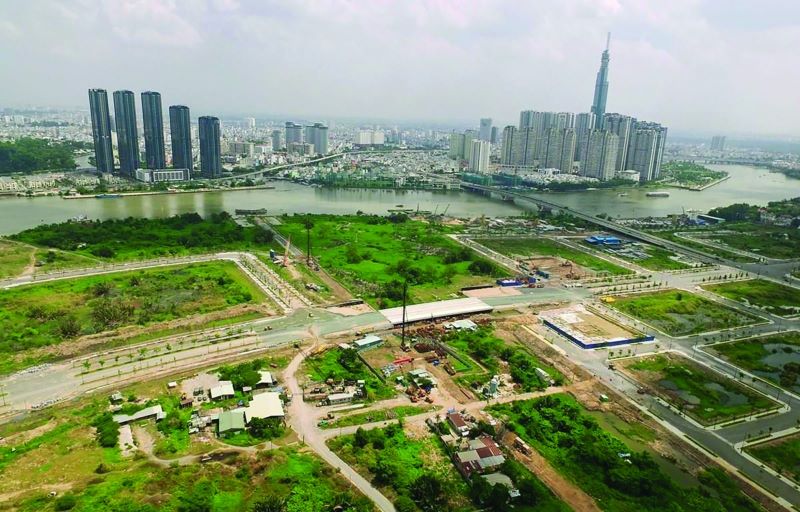Removing legal barriers for the Vietnam real estate market
According to Hanoi Law University Associate Professor Dr. Nguyen Quang Tuyen, two main difficulties have been recognized as impediments to the growth of the real estate market: financial limit s and legal framework issues.
In terms of the legislative framework, in Associate Professor Dr. Nguyen Quang Tuyen's view, the suggested revisions and additions to the Land Law Draft of 2013 (updated) would help to promote real estate market growth.

First, the Land Law Draft (updated) includes new provisions concerning land planning and land use plans. Land use and planning plans are developed at three levels: national, provincial, and district. Consistency, compatibility, and coherence must be ensured in the planning and land use plans. These plans are produced at the national, province, and district levels to satisfy the requirements of the socioeconomic development strategy's speedy and sustainable implementation, as well as to assure national defense and security.
Second, the proposal highlights the idea of land distribution and leasing, largely through land use rights auctions and land-use-related project bids. It imposes stringent rules in circumstances where land allocation or leasing does not entail land use rights auctions or project bidding. The draft primarily advocates yearly land lease payments and identifies situations when one-time land lease payments are appropriate for the nature and purpose of property usage, assuring a consistent stream of revenue. It also governs land allocation and lease conditions, as well as usage limit s for religious groups in accordance with local land resources.
Third, it specifies the authorities, aims, extent, circumstances, and precise criteria for land recovery in the service of national and public interests. It enhances measures for compensation, assistance, relocation, and land recovery for national defense, security, and socioeconomic development. Compensation, assistance, and relocation procedures must be planned ahead of time, guaranteeing openness and balancing the interests of the state, landowners, and investors.
Fourth, it specifies the effective use of surrounding land resources for socioeconomic development and establishes methods to control land use rights and land adjustment in urban and rural regions. The proposal does away with regulations concerning land price frames, instead relying on market-based pricing principles and creating procedures for central control and supervision, as well as provincial People's Councils, in the construction of land price tables. It also adds and enhances safeguards to guarantee transparency and accountability.
Fifth, the draft continues to develop land-related financial processes and regulations in order to balance the interests of the state, land users, and investors. It creates acceptable laws to govern revenue from land use fees and land leasing fees between the central and local levels, and it modifies land use costs for people who utilize huge amounts of land, have several dwellings, participate in property speculation, or postpone land use.
Sixth, the proposal strengthens the key legislative rules governing the real estate market, particularly the market for land use rights. It encourages the commercialization of land use rights, establishes requirements for the establishment of a real estate market information system linked to land information, imposes mandatory registration of land use rights and land use change registrations with specific penalties, and coordinates measures to prevent unregistered transactions at state agencies. It also broadens and limit s the transfer of agricultural land use rights.
Seventh, it embodies the spirit of Resolution No. 18 on land and land price management by removing the government's land price framing. Instead, it specifies the principles for determining land prices as follows: (1) based on the purpose of land use; (2) based on the duration of land use and other factors affecting land prices; (3) aligned with prevailing land prices in the land use rights market under normal conditions; and (4) adhering to the prescribed legal valuation methods and procedures.
Eighth, the document includes new rules for governing land revenue in the national budget, which will aid development. It empowers provincial People's Committees to set the amount of control depending on the real situations of their towns and individuals whose land has been reclaimed (Article 148).
Ninth, the plan includes possibilities for converting agricultural land users to alternate crop structures or animal husbandry (Article 172). It also specifies policies for land consolidation and aggregation for agricultural production in accordance with the principles, conditions, forms, and methods for land consolidation and aggregation for agricultural production, encouraging the application of science and technology in agricultural production on consolidated land.








